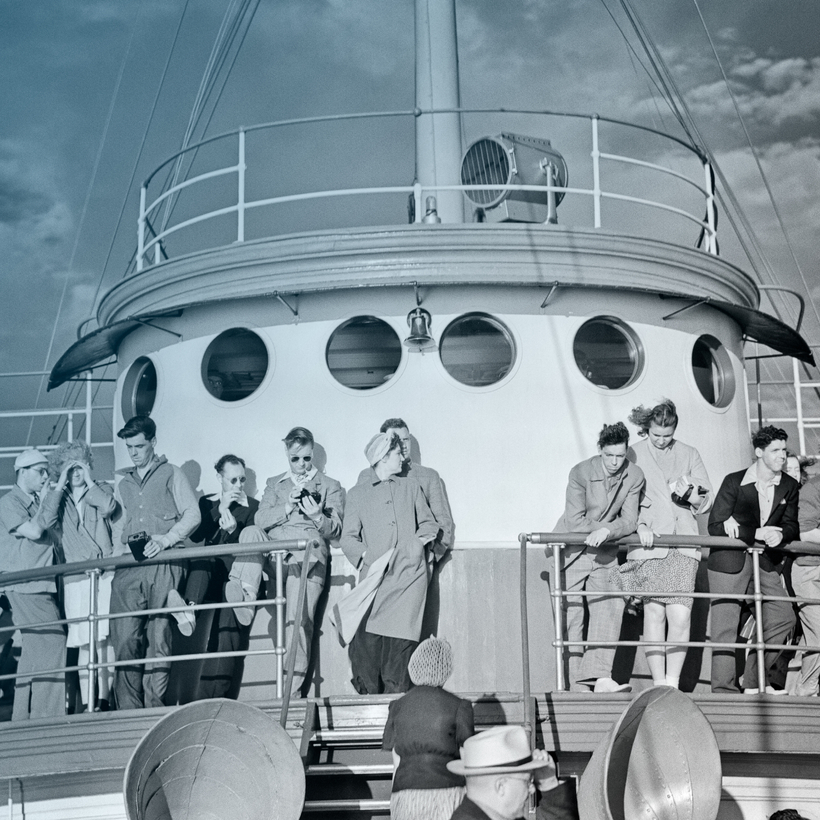Cape Cod Sea Camps, the summer camp I attended for several years in the late 1970s, recently shut its doors after 99 years, a family decision taken amid the pandemic. One of the camp field trips, back in my day, was a visit to “P-town,” as it was referred to, at the very end of the curved arm that is Cape Cod. My 11-year-old eyes saw it as a honky-tonk paradise of taffy and T-shirt stores. In later years I came to understand that Provincetown, along with Truro and Wellfleet beside it, formed a summer redoubt of artists, writers, psychoanalysts, and architects.
The “Cape Cod story” that John Taylor Williams tells in The Shores of Bohemia is a social history of the American creative class in the first half of the 20th century, a good portion of whose members, at least those based in New York City’s Greenwich Village, passed through the far reaches of the peninsula.
The book’s early chapters are populated by figures such as John Reed, Emma Goldman, and Lincoln Steffens, muckraking journalists confronting a pre–World War I era in which “many educated Americans were becoming appalled by the gigantic and brutal forces that post–Civil War capitalists like Rockefeller, Frick, and Morgan” had set loose. Workers’ rights, women’s rights—the vote, to begin with, and birth control—were among their urgent objectives. Many wrote for The Masses. Nearly all seem to have been graduates of Ivy League schools. But their passion and urgency for social justice is vividly evoked in Williams’s book.
It was an heiress turned journalist and a painter, Mary Heaton Vorse and Charles Hawthorne, respectively, who lured this crowd to the outer Cape, which some referred to as “Greenwich Village sunburnt.” This section of the book is kept afloat by its subjects’ capacity for such pithy remarks. About John Reed, a Harvard classmate writes, “Even as an undergraduate, he betrayed what many people believed to be the central passion of his life, an inordinate desire to be arrested.”
I was grateful for the education in the politics, culture, and social history of the 1910s and 1920s, especially since our current age seems to be mimicking those years in all sorts of frightening ways, including, almost to the year, a global pandemic. But the names begin to pile up. The crowding becomes even more intense as the founding generation pairs off, splits up, finds new arrangements, has children.
About John Reed, a Harvard classmate writes, “Even as an undergraduate, he betrayed what many people believed to be the central passion of his life, an inordinate desire to be arrested.”
About halfway through the book, Williams describes a beach party. It is August 1940. The occasion is a “mid-August Perseid meteor shower” passing across a totally dark sky; the host is a Harvard man named Jack Phillips whose childless uncle had left him a duck-hunting camp on Horseleech Pond that would become “the hub of Cape bohemian social life.” It is a moment when the flavor of the place, and of the people drawn to it, occluded throughout much of the book, shines through. Williams writes:
Jack Hall and Dodie packed up their Ford Beach Wagon with the requisite bathing suits (which Jack rarely wore) and sweaters for the late evening ‘onshore’ wind, Lucky Strikes, and scotch with a jar of ice. Dodie, never one for heavy drinking but a lover of beach cooking, threw in some Bound Brook corn, baked potatoes wrapped in foil, and a fresh-caught bluefish.…
One by one, they parked their cars along Jack Phillips’s sand road in the Back Woods and staggered with their baskets down the steep dune to the beach. The sun was just beginning its descent, and there was still plenty of light in which to dig a fire pit, gather driftwood, spread the blankets, unpack the liquor closet, and have a drink or two before donning swim clothes or not.
“That’s where, I think, all the great love affairs sprung from,” Ati Gropius, daughter of the Bauhaus architect Walter Gropius, speculates. “People went off on starlit nights.”
As the book progresses, new names appear belonging to figures with whom I was more familiar: Edmund Wilson, Mary McCarthy, Tennessee Williams, and then Alfred Kazin, Clement Greenberg, Norman Mailer. But at some point Williams’s compulsion to summarize each life—a cataloging of ancestors, schools, lovers, children, and professional accomplishments—begins to overwhelm the narrative. Williams celebrates his subjects’ liberation from the constraints of conventional thought and living arrangements in a prose style that only a law clerk could love.
Only at the very end, when a personal note enters, did the writing become evocative for me. Williams describes having married into this landscape—the place and the people—and living in its midst for 50 years (no doubt taking notes the whole time!). And he outlines the political machinations in which an attempt to protect the Cape by creating a Cape Cod National Seashore had the unintended effect of turning a good deal of the windswept, sandy, beautifully austere landscape into the “P-town” I experienced as a camper.
“A new America was replacing bohemia,” Williams writes, one that “placed much greater emphasis on monetary success as a definition of worthiness.” Reading those lines, I had the feeling of goose bumps rising on salt-encrusted skin. I thought of the fresh corn, the potatoes wrapped in foil, the scotch and ice, and the fresh-caught bluefish, all of which is surely available today, via a delivery app.
Thomas Beller is the author of several books, including Seduction Theory, The Sleep-Over Artist, and J.D. Salinger: The Escape Artist. His next book, Lost in the Game: A Book About Basketball, will be published by Duke University Press in November


